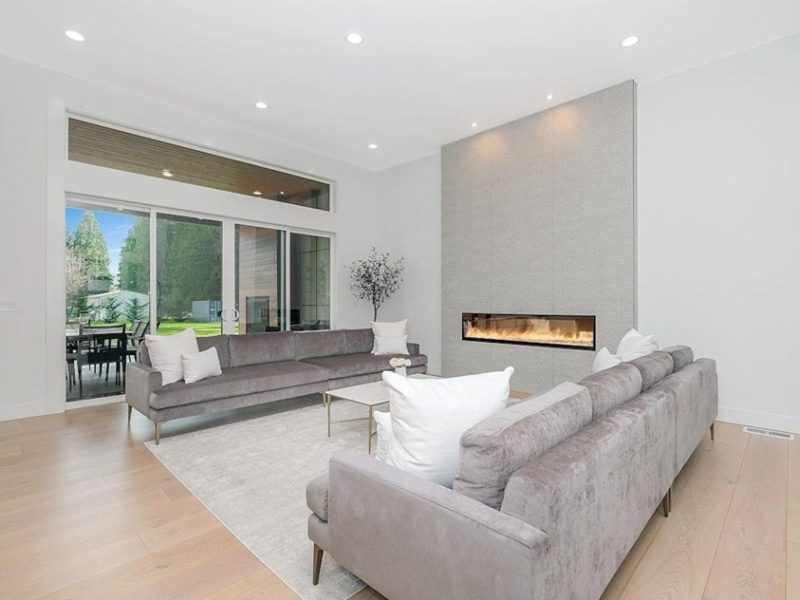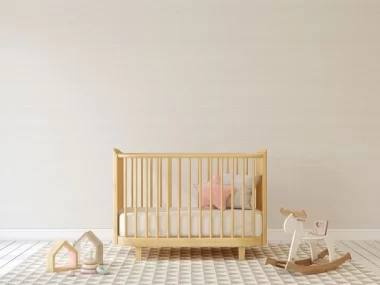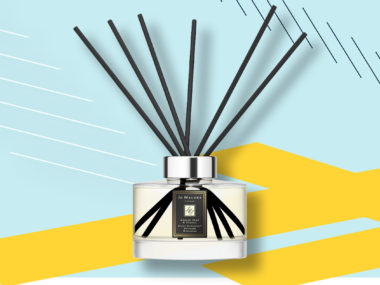The Foundation of Beauty: A Look at Modern Home Design Aesthetics
When we imagine our homes, we often picture beauty and comfort. But truly smart design offers much more. It’s about creating living spaces that are not just lovely to look at, but also work perfectly and keep us safe.
We believe a modern home should be a true sanctuary. This means it needs to be efficient, saving energy and providing comfort. It also needs to be protected from daily wear and tear, and outside elements. Smart design supports our lives in every way.
This guide will explore the key ideas behind smart home design. We will look at how experts bring together beauty, efficiency, and protection. Our goal is to help you understand the elements that make a house a truly intelligent and comfortable home.
Creating a beautiful home goes far beyond simply choosing attractive furniture. It involves a thoughtful and intentional approach to every element within a space, ensuring that each component contributes to a cohesive and inviting atmosphere. Modern home design aesthetics prioritize clean lines, functionality, and a sense of openness, often blurring the boundaries between indoor and outdoor living. This approach aims to create environments that are both visually stunning and deeply comfortable.
At the heart of beautiful design are cohesive spaces. This means ensuring that each room flows seamlessly into the next, maintaining a consistent style and mood throughout the home. It’s about creating a visual narrative that guides residents and guests through the living environment, making each area feel connected yet distinct. Achieving this often starts with careful material selection. The choice of materials—from natural wood and stone to sleek metals and textiles—plays a crucial role in defining the character and warmth of a space. We often consider how different textures interact, creating depth and interest without overwhelming the senses.
Color palettes are another fundamental aspect. Modern aesthetics frequently lean towards neutral bases, such as whites, grays, and earth tones, which provide a calming backdrop. These can then be accented with pops of color through artwork, furnishings, or decorative elements. The strategic use of color can influence mood, make spaces feel larger or more intimate, and highlight architectural features.
Lighting design is equally critical. It’s not just about illuminating a room; it’s about shaping its ambiance. Experts use a combination of natural light, ambient lighting, task lighting, and accent lighting to create layers of illumination. Large windows are often central to modern designs, inviting ample natural light and offering expansive views. However, managing this light effectively is key to preventing glare and excessive heat, which we will discuss further.
The role of flooring in setting the tone for a home cannot be overstated. It serves as the canvas upon which all other design elements are placed. Materials like polished concrete, natural stone, or wide-plank hardwood floors contribute significantly to the aesthetic appeal and overall feel of a modern home. For those seeking enduring elegance and superior durability, the importance of premium hardwood installation becomes clear. High-quality hardwood not only adds warmth and sophistication but also stands the test of time, proving to be a wise investment in the home’s overall value and aesthetic integrity.
Architectural vision guides the entire process. This vision encompasses everything from the structural layout to the smallest decorative detail, ensuring that the home is not only beautiful but also functional and responsive to the needs of its occupants. Experts in fields like BAE San Francisco home design are masters at crafting spaces that embody this holistic approach, creating timeless homes that blend innovative design with practical living. They understand that true beauty in design is about harmony, balance, and a deep appreciation for how people interact with their environment.
Engineering Efficiency: Enhancing Comfort and Reducing Energy Costs
Beyond aesthetics, a truly smart home excels in efficiency, providing unparalleled comfort while significantly reducing energy consumption. This aspect of design is becoming increasingly vital as we seek sustainable living solutions and ways to manage household expenses more effectively. Our focus here is on how advanced technologies and thoughtful planning can transform a home into an energy-efficient haven.
Energy conservation is a cornerstone of efficient home design. It involves minimizing waste and optimizing resource use, particularly concerning heating and cooling. One of the biggest culprits of energy loss and discomfort in many homes is the windows. They can be significant sources of heat gain during warmer months and heat loss during colder periods, leading to what we often call “thermostat wars” within a household. This constant battle against external temperatures puts a tremendous strain on HVAC systems, leading to higher energy bills and a larger carbon footprint.
Glare reduction is another critical benefit of engineering efficiency into a home’s design. Unwanted glare from the sun can make it difficult to work on computers, watch television, or simply relax comfortably. It can also create uncomfortable hot spots in certain areas of a room, further contributing to uneven temperatures. High-quality coatings and professional application, particularly in the form of advanced window films, offer an neat solution to these challenges.
Solar control films are specifically designed to manage the amount of solar energy that enters a home. They work by reflecting or absorbing a significant portion of the sun’s heat, preventing it from penetrating the glass. This reduces the burden on air conditioning systems, allowing them to operate more efficiently and less frequently. Similarly, insulating films are engineered to improve a window’s thermal performance, helping to retain heat indoors during winter and block it during summer, contributing to year-round comfort.
The Science of Advanced Window Coatings
The effectiveness of these films lies in their sophisticated scientific composition. Modern window films are not just simple tints; they are engineered with advanced materials that selectively manage different parts of the solar spectrum. This includes exceptional UV rejection, which is crucial for protecting interiors and occupants. Many high-performance films can block up to 99% of harmful UV rays, which are a primary cause of fading for furniture, flooring, and artwork, and can also contribute to skin damage.
Beyond UV, these films are adept at blocking infrared light. Infrared (IR) light is primarily responsible for the heat we feel from the sun. By blocking a high percentage of IR light, these films can dramatically reduce heat gain without significantly darkening a room. This is where non-metallic technology, often found in premium film series, truly shines. Unlike older, metallic films that could interfere with cell phone signals or create a reflective, mirrored appearance, non-metallic films offer superior heat rejection while maintaining natural light and clear, unobstructed views. They effectively reduce hot spots, ensuring a more consistent and comfortable temperature throughout the home, regardless of the season. The result is a brighter, more comfortable living space that is energy-efficient year-round.
Why Professional Installation Matters for Your Home Design
While the technology behind advanced window films is impressive, their performance is heavily reliant on the quality of installation. We cannot overstate the importance of professional installation for maximizing the benefits and longevity of these products in your home design.
A seamless finish is the hallmark of expert application. Professional installers have the specialized tools, training, and experience to apply window film smoothly, without unsightly bubbles, creases, or peeling. This meticulous attention to detail ensures that the film looks like an integral part of the glass, rather than an add-on. Such precision is vital not only for aesthetics but also for the film’s durability and effectiveness.
Maximizing performance is another key reason to choose professionals. Correct installation ensures that the film adheres properly and functions as intended, delivering its full potential in terms of UV rejection, heat control, and glare reduction. An improperly installed film may not provide the advertised benefits and could even lead to premature failure. Longevity is directly tied to the quality of installation. When applied correctly, high-quality window films can last for many years, often backed by comprehensive manufacturer warranties. Professional installers understand the nuances of different film types and how they interact with various glass surfaces, ensuring a secure and lasting bond.
Furthermore, custom fitting is essential, especially for unique window shapes or large glass expanses. Professionals can precisely cut and fit the film to every window, ensuring complete coverage and a custom look. They also know how to work around existing window treatments and hardware, minimizing disruption to your home. Professional installation is an investment that guarantees the aesthetic appeal, optimal performance, and extended lifespan of your window films, making them a truly valuable addition to your smart home design.
A Sanctuary of Protection: Safeguarding Your Home and Valuables
A smart home is not only beautiful and efficient but also a sanctuary of protection, safeguarding both its occupants and their cherished possessions. This layer of defense extends beyond traditional security measures, incorporating advanced solutions that shield against environmental damage and improve safety within the living space.
One of the most insidious threats to a home’s interior is UV damage. The sun’s ultraviolet rays are a leading cause of fading for furniture, flooring, and artwork. Over time, constant exposure can bleach fabrics, degrade wood finishes, and diminish the vibrancy of paintings and photographs, irreversibly devaluing these items. Our homes are often filled with significant investments and sentimental treasures, making fading prevention a critical aspect of thoughtful design. Advanced window films are highly effective in blocking these harmful UV rays, preserving the original beauty and integrity of your interior décor.
Beyond material protection, UV rays also pose a risk to human health. Prolonged exposure can contribute to skin damage and increase the risk of certain skin conditions. By filtering out the majority of UV radiation, window films offer an added layer of skin protection for everyone within the home, allowing families to enjoy natural light without unnecessary concern.
Furthermore, enhancing safety within the home is paramount. Windows, while offering views and light, can also be vulnerable points. In the event of an accident, natural disaster, or attempted break-in, ordinary glass can shatter into dangerous shards, posing a significant risk of injury. Security window films provide shatter resistance by holding broken glass together, preventing flying glass shards and maintaining the integrity of the window pane. This glass shard containment not only protects occupants from cuts and lacerations but can also deter intruders by making it much harder to gain entry quickly.
The Synergy of Protection in Modern Home Design
The principles of protection we apply to homes are often universal, demonstrating a clear synergy across various property types. Whether we are safeguarding a residential dwelling or a commercial office, the underlying strategies for enhancing safety and preserving assets share common ground. For instance, the need for UV protection to prevent fading of interiors is just as relevant for a sun-drenched living room as it is for an office filled with expensive equipment and furnishings. Similarly, the desire for improved security against breakage or intrusion is a shared concern. The synergy between Home Design and Office Window Film applications demonstrates this shared focus on safety and UV protection, highlighting how versatile and essential these protective measures are across different environments. By understanding these universal protection principles, we can implement comprehensive solutions that offer peace of mind and long-term value for any space.
Frequently Asked Questions about Smart Design Improvements
As we explore the multifaceted benefits of smart design, particularly concerning advanced window solutions, a few common questions often arise. We aim to provide clear and concise answers to help you make informed decisions for your home.
How does advanced window film improve energy efficiency without making a room dark?
This is a common and excellent question, as many people associate window film with a dark, tinted appearance. However, modern advanced window films use sophisticated spectrally selective technology. This means they are engineered to selectively block specific wavelengths of the solar spectrum while allowing others to pass through.
Specifically, these films are highly effective at blocking harmful ultraviolet (UV) rays and heat-producing infrared (IR) light. These are the primary culprits behind fading and excessive heat gain, respectively. Simultaneously, they are designed to allow a significant portion of visible light to pass through. This innovative approach means that your room remains bright and illuminated by natural light, and your views to the outside are largely unobstructed. You get the benefits of reduced heat and glare, along with superior UV protection, all while maintaining the brightness and aesthetic appeal of your interior. It’s about smart light management, not light elimination.
Can protective films be applied to any type of residential window?
In most cases, yes, protective films can be applied to a wide variety of residential window types. However, successful application and optimal performance depend heavily on a professional assessment. Experts consider several factors, including the type of glass (e.g., single-pane, double-pane, low-E, tempered, laminated), the age and condition of the window, and the specific film chosen.
While most films are compatible with standard glass, certain high-performance films or older, less robust window systems might require careful consideration to avoid issues like thermal stress breakage. This is why the importance of expert consultation cannot be overstated. A qualified professional will evaluate your windows, recommend the most suitable film for your specific needs and glass type, and ensure proper installation to guarantee both effectiveness and the longevity of your windows. They understand the nuances of different glass compositions and can advise on any potential limitations.
What is the most significant benefit of protecting interiors from UV radiation?
While there are multiple significant benefits, we believe the most impactful is the preservation of your home’s value and the prevention of irreversible damage to your belongings. UV radiation is a silent destroyer, causing gradual but profound fading and degradation of flooring, furniture, textiles, and artwork. Once these items are faded or damaged by UV, their original beauty and value are often permanently compromised.
By blocking up to 99% of UV rays, protective films act as an invisible shield, dramatically extending the lifespan and maintaining the pristine condition of your interior investments. This means your beautiful hardwood floors retain their rich color, your upholstered furniture remains vibrant, and your cherished artwork stays true to its original hues for years to come. Beyond protecting your possessions, it also contributes to protecting your family from the harmful effects of UV exposure on skin. It is a long-term investment protection that safeguards both your assets and your well-being.
Conclusion: The Future of Thoughtful Home Living
In our exploration of smart design, we’ve journeyed through the essential pillars that transform a house into a truly intelligent and comfortable home: beauty, efficiency, and protection. We’ve seen how a thoughtful architectural vision, combined with meticulous material selection and expert lighting, lays the foundation for aesthetic appeal. Beyond the visual, we’ve dug into how advanced window films and coatings engineer efficiency, dramatically enhancing comfort, reducing energy costs, and contributing to a more sustainable lifestyle. Finally, we emphasized the critical role of protection, safeguarding your home’s interior from damaging UV rays and bolstering its security against unforeseen events.
The integration of these three pillars—beauty, efficiency, and protection—is what truly defines a holistic living environment. It’s about creating spaces that are not only visually pleasing but also perform optimally, adapting to your needs and protecting your investments. This comprehensive approach to home design reflects a growing understanding that our living spaces should actively contribute to our well-being and the health of our planet.
Making informed design choices is an investment that pays dividends for years to come. It’s an investment in the longevity of your home’s aesthetics, the comfort of its occupants, and the security of your assets. As we look to the future, thoughtful home living will increasingly prioritize these integrated solutions, creating environments that are not just places to reside but true sanctuaries that support and improve every aspect of our lives.







